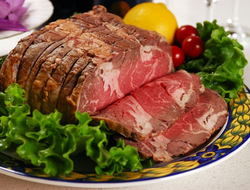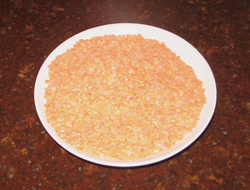Red meat: nutrient benefits and costs
Published: January 04, 2019
Red meat has been a dietary favourite, if not staple, for millions of people around the world for many years.
Changes in production methods since the mid 20th century in many western societies have lead to ample supplies available at relatively low cost.
In North America consumption of red meat has increased significantly as has the incidence of heart disease, type 2 diabetes, cancer and obesity.
In the search to determine causal agents of these adverse health conditions, red meat has been cited as a possible agent.
While red meat may not be directly associated with increased risk there is increasing scientific evidence to suggest that various components/nutrients in red meat may contribute to physiological conditions which increase your risk for developing these life altering conditions.
Research concerning nutrition and disease can be confusing and research results from different studies are sometimes contradictory.
There are also environmental concerns about the health of livestock and how their production impacts the environment.
What is red meat?
Determining what red meat is can be confusing.
Traditionally, and from a gastronomic perspective, red meat refers to darker coloured meat contrasted to lighter coloured white meat.
The meet from cattle, sheep, horses, and presumably goats, is commonly regarded as red meat, with the exception of the meat from calves, lambs and pigs fed with milk which is considered white meat.
In general, the meat from poultry, fish and rabbit is regarded as white meat, but duck and goose may be considered red meat. Game meats are not included in these descriptions.
From a nutritional perspective red meat has historically been determined by the concentration of myoglobin present in the meat.
Myoglobin is a protein found in mammalian muscles and in the tissue of most vertebrates. This protein binds to iron and oxygen and is related to haemoglobin which is the protein that binds iron and oxygen in blood.
Meat that has a higher concentration of myoglobin is defined as red meat, while meat with...link to the full article to learn more.
References
1.
Whitney, E. & Rady Rolfes, S. (2005). Understanding Nutrition. Belmont, CA: Thomson Wadsworth
3.
CSPI May 2007, December 2007, May 2008, June 2009, December 2010, October 2010, August 2010 May 2011, April 2011, July August 2011, November 2011, October 2011, July/August 2013,June 2013, June 2014, September 2014


